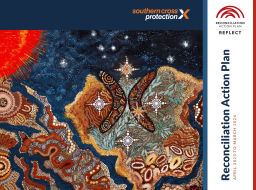Part 3: The Meaning of Global Terrorism Events for Australia’s Everyday Security Professionals
My first year in Australia was exceptionally tough…
Within days of my arrival and before I could even unpack my duffle bags, my wife had planned us an elaborate wedding where she made me dress up in my spotless Mess Dress Blues. Leading up to that, we had been preparing for the cost of starting a new life in one of world’s most expensive cities, Sydney. She sacrificed a lot in order to save money for us, and she did the only things she knew: she worked extra hard at her CBD law firm; she lived with her parents; she ate at home mostly; she threw away her expensive hobbies; she dialled down her social life. I, too, had done the only thing I knew: I raised my hand and deployed to the Middle East for 3 months, followed by 13 months in East Africa, back-to-back.
We saved a lot of money! Woo-hoo! But I’d be lying if I said it didn’t take an emotional toll on us… on me… So here I was: new country, new wife, new friends, new language. I’m the kind of guy who solves all of life’s problems in a cave, so I took that first year off to take some online courses. I deleted my Facebook account (and proudly haven’t turned it on since), got rid of the mobile phone, and secluded myself as much as possible. Australia is one of the safest countries on the planet, and by God I deserved a break. So guess what I did. I took one!
One day I woke up at a leisurely hour since I’d been up late studying, and there was an iMessage from my wife: “If you’re seeing the news, I’m OK. I’m back in the office.”
Huh? What’s she talking about?
I turned on the news to see what was going on. Breaking News! Sydney under attack by an unknown number of Islamist extremists! Lindt Café taken with unknown number of hostages. Police investigating suspicious packages at Opera House and elsewhere around the city.
What the #@%!
So I jumped on Skype – never mind the missed calls from my wife. I called her back!
“I had a meeting in the Lindt Café Building,” she recounted, “but we were running 8 minutes late. We were rushing to get to our meeting, when all of a sudden, heavily armed police were running all around us. They were starting to block off the area, and one police officer ordered us to turn around. We came back to the office and turned on the news. Everybody is so scared. Nobody knows what to do. Some people are talking about going home, but we’re not sure what’s going on with the buses. Babe, what should I do? Should I try and take the bus home?”
“No,” I said to her as soothing as I could. “Stay where you are. Don’t go anywhere. From the news it sounds like there could be IEDs around the city. Stay away from any large groups of people; stay away from public places; don’t go to any bus stops. The safest place for you to be is exactly where you are right now. I will drive down and pick you up when it’s safe. Let me know immediately if anything changes.”
“But how do I reach you?”
“I’ll go get a phone right now, and I’ll call you in an hour.”
Have you ever tried to buy a mobile phone in a foreign country, without a job, without any local identification, and without even knowing who sells mobile phones in that country to begin with? Well turns out it takes longer than an hour!
I won’t assess the whole country’s response to the incident. Today I will only assess my own, and let me tell you, the Martin Place Siege flat out caught me with my pants down! I allowed myself to get complacent because come on, I live in Australia, and nothing ever happens here! Plain and simple: I was not ready!
CNN keeps a running record of ISIS attacks around the globe since declaring its caliphate in June 2014, updated regularly. Under the title of “ISIS goes global”, the report considers not only the attacks carried out directly by ISIS and its affiliates, but also the ones inspired by ISIS. As of the most recent update on July 6th, they reported at least 126 attacks in 23 countries not including Iraq or Syria, killed at least 1,735 people, and injured thousands.
Two of those attacks where airports, as you know. On 22 March two suicide bombers hit the check-in area at Zavantem International Airport in Brussels. The first one detonated on one side of the building, pushing people towards the second as it detonated seconds later near the exit on the opposite side. A third suicide bomber attacked a metro station across the city an hour later. On 28 June three suicide bombers attacked Ataturk International Airport in Turkey. The attacks occurred at Arrivals, Departures, and the car park.
I find these particularly noteworthy because both of these are major international hubs, and we generally consider airports to be inherently “safe” places. The question is, where do you draw the line to start checking people? Should the security checkpoints be moved farther out?
London’s Heathrow Airport tried that after the Lockerbie attack in 1988. Norman Shanks, who was in charge of airport security at the time, commented in an interview that this just made the problem worse. They didn’t solve the problem, they just moved it outside, and “if anything it was less safe, because we had large groups of passengers bunched together on pavements, which made them vulnerable”.
The November 2015 Paris attacks which grieved us all also exposed this vulnerability. The first bomb at Stade de France detonated not inside as it was intended, but at the next best location, the security checkpoint itself.
This raises the first of four important points I’d like to highlight, relevant to all of us security professionals in Australia. It doesn’t matter how thorough we make our security checkpoint. As long as there’s a bottleneck, the security checkpoint itself creates a very attractive target.
Each of these attacks involved a coordinated effort between multiple members of a cell, let’s say 3-5 as in the recent airport attacks, and multiple teams in the case of the Paris November 2015 attacks. Lone-wolf attacks are quite prevalent, and I’ll come back to that later, but the important thing to note here is that in all of the worst attacks, the attackers weren’t acting alone. And this is something our security officers really need to be aware of, because in the unlikely event that they find themselves confronted by a Jihadist, rather than focusing all their attention on neutralising that one threat, it is critical that they be thinking along the lines of “who else?” In that event, the security officer needs to be ultra-aware of his or her environment.
My next point requires a bit of understanding into the historical background of Islam. As you know, we have different brands of Christianity. You can be a Catholic, Protestant, or Orthodox, for instance; you can be Baptist, Mormon, Pentecostal, etc. They all share the same core beliefs, yet they’re all very different, and in some cases they can be antagonistic to one another. Some brands of Christianity are quite tolerant of other denominations, and others are not. Well Islam is no different.
There are different brands of Islam. Within the Sunni group, there is a particular movement called Salafism, and this is what colloquially Westerners consider “extremist ideology”. In Saudi Arabia it’s the national religion, but even so, most Salafists are not Jihadists – by the Western interpretation of jihad as Holy War, because the true sense of jihad refers to the internal struggle we all experience through life. Salafists are further distinguishable into a couple different groups, and the Jihadists are only a tiny minority. I’d like to make that crystal clear. All Jihadists are Salafists, but not all Salafists are Jihadists – again, by Western interpretation of the term.
If you’ve been following American politics at all lately, you’ve heard of plans to instate a ban on all Muslims entering the U.S., and there are a number of ill-informed arguments used to support it. From time to time I hear similar, divisive statements not only on the news, but often within our industry.
So the point I’d like you to walk away with is that just because one of our brothers or sisters is Muslim, the chances of that person being a Jihadist are extremely slim. The problem isn’t with “Muslims”. The problem is with only a tiny subset of that entire religion.
My fourth and final point regards this notion of a “caliphate”, and this will speak directly to the attacks we have already experienced in Australia. A caliphate is a united Islamic State ruled by a single political and religious leader, a Caliph, who has absolute power and authority as successor to the Prophet Mohammed. ISIS’s self-proclaimed, worldwide caliphate then, blurs all political borders and calls on all Muslims (of that brand) to fight. And oh by the way, ISIS is brilliant when it comes to social media marketing.
Important to note here that for a Salafist, non-Salafists are considered non-Muslim, so in that regard there’s little difference between a Christian and a Shia Muslim, for instance. The majority of ISIS victims have been fellow Muslims, and the majority of the Muslim community rejects this caliphate.
Realistically, only Jihadists will answer that call to fight, and as I mentioned earlier those are only a tiny minority. If we listen to much of the rhetoric coming from ISIS, there is a call for all “Muslims” to conduct lone-wolf attacks in their respective countries of residence, and as a member of the Western military coalition fighting in the Middle East, Australia is specifically named as a target.
If you look through the attacks that have occurred not only in Australia, but globally, a big number of them fall into this category. These are people who were “radicalised” for any one of a number of possible reasons, they subscribed to the rhetoric, and they took it upon themselves to mount their own attack. From an intelligence perspective, intercepting communications with regards to coordination of an attack provides a vital piece of information. But if the individual is acting alone, then there’s nothing to coordinate, and therefore there’s no communication to intercept. This makes it extremely difficult to detect.
In my estimate, the worst case scenario for us is a Paris or Nairobi-style attack, but I don’t think that’s most likely. I think the most likely scenario is a lone-wolf attack by someone who has been radicalised, either by social media or by fundamentalists in our midst.
Australia’s current National Terrorism Threat level is “Probable”. Definitely higher than “Possible”, but not yet “Expected”. Please keep that in perspective. Translation: an attack on Australian soil “might” happen, but unfortunately it’s not enough for us to say we “probably” need to be ready. Or worse, don’t make the same mistake I made prior to the Martin Place Siege, where I threw my hands up in the air and said “we’re safe, nothing will ever happen here”. You don’t have to go taking any rash measures. In this moment, all your country asks of you as a security professional is that you be ready… So that’s it. Be ready…
Read Part 1B of this series here.
Read Part 2 of this series here.
This article appeared in Vol. 21, Issue 3 (Aug-Sep 2016) of ASIAL’s Security Insider Magazine.
Ben Beville is a Risk Advisor and Electronic Sales Engineer at Southern Cross Protection/CAGE Security. He was formerly a Lieutenant Commander in the U.S. Navy, where he served 11 years active and reserve. He has completed multiple deployments to Africa and the Middle East, afloat and ashore. Early in his career he served as a Boarding Officer aboard USS Chosin, where he assembled and trained three highly proficient boarding teams that were tasked with providing maritime security for Iraq’s oil terminals. He returned years later as a Maritime Interception Operations planner aboard the carrier USS John C. Stennis. Among his other assignments, he has also served as an Africa specialist, working for various U.S. Embassies to coordinate U.S. Navy activities including ship visits to high-risk ports. His final duty station was as a watch-floor supervisor at the coalition operations centre in Djibouti, where he also assisted the U.S. Embassy in facilitating the training and equipping of 550 Djiboutian peacekeepers deploying to Somalia to support United Nations operations.






